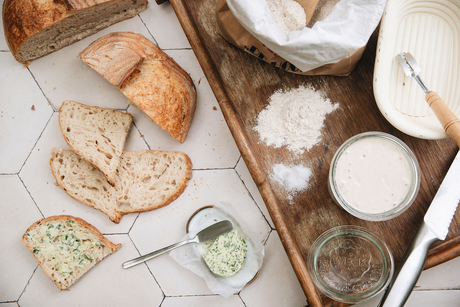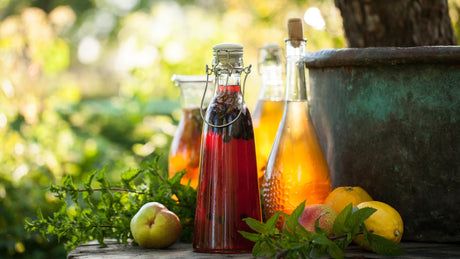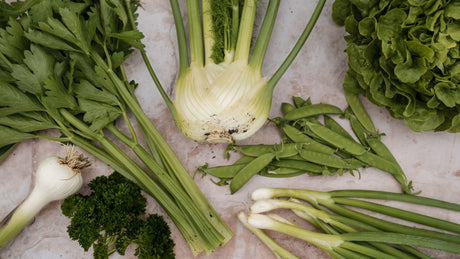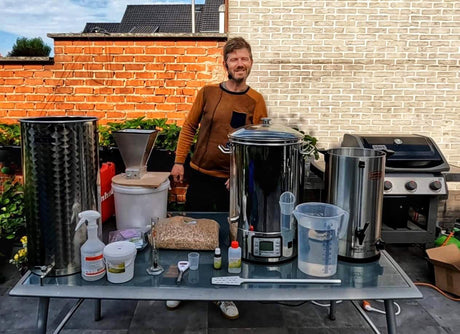crop rotation in the vegetable garden
Introduction
If you want to successfully grow vegetables in your vegetable garden, you can't plant the same crops in the same place every year . Everyone knows that by now. Some geniuses can conjure up different crops next to each other every year from memory. With good vegetable gardeners, the crops will help each other, not exhaust the soil and even contain diseases such as clubroot and the dreaded tomato plague. Experts also take into account the root depth of the crops when making combinations. In the crop files on this site you can also find which are the good neighbours and which are the bad ones and a description of the root system for each crop. But I, I need an easy system. It is called crop rotation and in this article I will tell you more about it. Each plant takes different nutrients from the soil and gives other elements back to the soil . To prevent your vegetable garden soil from becoming unbalanced (and therefore less productive) we do crop rotation. It is also very important that crop rotation interrupts diseases in your vegetable garden so that they cannot establish themselves permanently. Crop rotation obviously only applies to 1-year-old plants , perennial plants such as asparagus do not appear in this system. Crop rotation is based on common properties of crops or crop groups. Crop groups such as leafy vegetables go together in 1 bed and move a bed each year. It is important that your beds are the same size. If not, you may be able to grow more of a certain crop one year and less the next. If all beds are the same, you will have the same amount each year. If you have beds that do not fill up completely, you can supplement them with flowers, decoration or perhaps even an insect hotel. As you will see later, we will divide the beds per 6. The beds are determined on the basis of food requirements and properties (plant families) . An overview ...
Food needs
 Based on food needs, we can distinguish three categories:
Based on food needs, we can distinguish three categories:
- Crops that need a lot of nutrition: These crops need a lot of fresh, rich nutrition ( compost , average tarred manure, liquid manure or slurry, ...). The plants can be placed directly in the fertilized soil. These greedy crops are crops with a lot of leaves: such as lettuce , spinach , cabbage, kale, endive, celery , leek , corn , cucumbers and courgettes . Rhubarb is also a big eater but is a perennial plant so it does not occur in crop rotation. Tomatoes, which also need a lot of nutrition, are a bit of an exception. They like to be in the same place every year and build up resistance to problems themselves. The tomato plague is the only real disease that threatens the plant. Avoiding moisture and humidity is the solution to this. The fact that they want to be in the same place is good because in our climate they usually have to be in the greenhouse or hothouse. You do have to fertilize well every year. At the end of the growing season, you can rinse out the greenhouse with water or snow that you shovel into it.
- Crops that maintain or improve the soil: Leguminous crops such as peas and beans improve the soil, just like green manures. They are best grown after crops that require a lot of nutrition. This allows the soil to recover a bit. They give the soil a rest after a busy year and these crops also bring extra nitrogen into the soil for your cabbage crops.
- Crops that need little nutrition: These crops still like compost but it should not be fresh. Otherwise they grow lush and coarse. So well-tarred compost or manure is very good for root and tuber crops such as carrots , radishes and beets. Also parsley with its deep roots and many herbs belong to this class.
Different families
Yes, just like us humans, vegetables can also exhaust the soil and therefore each other. 'Vegetable gardening' seen , plants from the same family can have the same nutritional needs . In this way, they will exhaust the soil or exhaust specific nutritional values in the soil when we grow them in the same place over and over again. They can also attract the same problems, which is why we plant them quite far apart. Of thousands of plant families, these are the most special: Monocotyledons
Of thousands of plant families, these are the most special: Monocotyledons
- Grasses (Gramineae), such as grain and maize
- Cruciferous family (Cruciferae). Cold-loving plants such as white and red cabbage , kale , pak choy, kohlrabi, turnip. Also radishes and garden cress.
- Pea family (Leguminosae). These are peas , beans , lentils and lupins.
- Umbelliferae family. Many root vegetables belong to this family, such as carrots , parsnips , celeriac and fennel . The herbs parsley and caraway also belong to this family.
- Goosefoot family (Chenopodiaceae). This is a mix of crops including beets, Swiss chard/chard and spinach
- Nightshade family (Solanaceae). These are the well-known potatoes , tomatoes, eggplants , peppers and paprika 's
- cucumber family (Cucurbitaceae). These are heat-loving plants such as melon, pumpkin , courgettes and gourds
- Compositae family. These are complex composed crops, hence the name composite family. Chicory, endive, sunflower , Jerusalem artichoke, artichoke, radish and plants such as dandelion, yarrow and chamomille belong to this family.
Getting Started
 Time to look in your garden at how we can put crop rotation into practice. You should start with a list of annual crops that you want to grow. And place them in 6 groups:
Time to look in your garden at how we can put crop rotation into practice. You should start with a list of annual crops that you want to grow. And place them in 6 groups:
- Bed 1: potatoes
- Bed 2 : Legumes
- Bed 3 : Cabbage crops
- Bed 4 : Leafy vegetables
- Bed 5 : Fruit crops
- Bed 6 : Root vegetables
A mnemonic for the order of beds is the sentence: All pesticides are better avoided. The principle of crop rotation is that you plant root crops where your potatoes were; plant potatoes where your legumes were, plant legumes where your cabbage crops were, plant cabbage crops where your leafy crops were, leafy crops where your fruit crops were and fruit crops where your root crops were. And so after 6 years (or 7 years if you rotate the strawberries) the circle is complete. On the website of Moestuinweetjes you will find a crop index in the menu bar. If you are unsure which vegetable belongs where, take a look there. If you do not have a certain category, you can simply leave that crop out and work with 5 beds. Your greenhouse can of course also be considered a bed, but that bed does not participate in crop rotation. Unless you can easily move your greenhouse or glasshouse. If you have perennials in a bed, you can make additional beds but they will not be included in the crop rotation system (asparagus, berry bushes, strawberries, ...). If you want to plant the runners of your strawberries in a new bed each year, plant them in the bed of your fruit crops and put leafy crops in that bed the following year.
Ground preparation
 Prepare each bed for what is to come:
Prepare each bed for what is to come:
- Bed 1: potatoes : potatoes need a lot of air and good drainage so make sure the soil is airy with your spade or fork. Work 5 to 10 centimeters of tarred compost into your soil and add a fertilizer NPK (Nitrogen, Phosphorus, Potassium) of 5-10-10 early. Do not add too much nitrogen (nettle manure or manure). That stimulates leaf growth but not the growth of the tubers.
- Bed 2: Legumes: The soil must be well loosened. Some tarred compost without manure is good for legumes. In between a few grains (very little) of universal manure granules gives a good yield. Legumes leave masses of nitrogen behind where you can plant the cabbages next year.
- Bed 3: Cabbage crops: The soil may remain somewhat compact here, but a light turning or cultivation will not do any harm. Add plenty of fresh compost , cow manure pellets and also feed with comfrey manure or other fertilizer high in Potassium.
- Bed 4: Leafy vegetables: Loosen the soil well, leafy vegetables need a lot of nitrogen for leaf growth. You can find this in fresh compost , nettle manure, universal fertilizer, ...
- Bed 5: (Strawberries): Loosen the soil well ( fork or spade), add a lot of tarred compost or tarred manure with a good balance, gives a lot of fruits. Give regularly some comfrey manure (can be made yourself, free)
- Bed 6: Fruit crops: Loosen the soil well ( fork or spade), lots of tarred compost or manure with a good balance. Give regularly some comfrey manure (can be made yourself, free)
- Bed 7: Root crops: Loosen the soil well, do not introduce fresh manure or compost . The root crops can grow sufficiently with the nutrients that are still present in the bed from last year (Potato bed).
The beds for cabbage crops, fruit crops and leaf crops like green manure the winter before. Note that you do not use mustard or turnip as green manure for the cabbage crops. These also belong to the cabbage crops. For your cabbages, it is better to use lupins, phaecelia or winter rye. Have fun and hopefully soon bins full of harvest!







